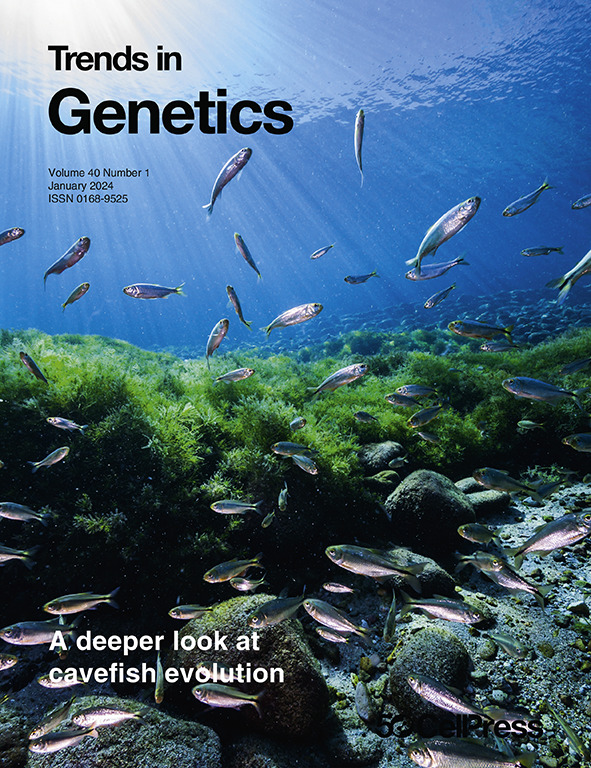编码序列中的m6A:连接沉积、翻译和衰变。
IF 16.3
2区 生物学
Q1 GENETICS & HEREDITY
引用次数: 0
摘要
n6 -甲基腺苷(n6 - methylladenosine, m6A)是mRNA中最丰富的内部修饰,在调控mRNA的转换中起着至关重要的作用。本文探讨了编码序列(CDS)中m6A位点的特征及其对mRNA衰变的影响,重点介绍了新发现的CDS-m6A衰变(CMD)途径——一种促进快速有效降解的翻译依赖机制。此外,我们研究了剪接相关因素如何影响m6A沉积,并讨论了加工体(p体)中CMD靶点的富集。我们强调m6A修饰与衰变之间的相互作用,并提出靶向CMD通路可能为癌症和代谢紊乱等疾病提供新的治疗策略。本文章由计算机程序翻译,如有差异,请以英文原文为准。
m6A in the coding sequence: linking deposition, translation, and decay.
N6-methyladenosine (m6A) is the most abundant internal modification in mRNA and plays a crucial role in regulating mRNA turnover. This review explores the characteristics of m6A sites in the coding sequence (CDS) and their influence on mRNA decay, with a focus on the newly discovered CDS-m6A decay (CMD) pathway - a translation-dependent mechanism that promotes rapid and efficient degradation. Further, we examine how splicing-associated factors influence m6A deposition and discuss the enrichment of CMD targets in processing bodies (P-bodies). We emphasize the interplay between m6A modification and decay, and propose that targeting the CMD pathway could offer novel therapeutic strategies for diseases such as cancer and metabolic disorders.
求助全文
通过发布文献求助,成功后即可免费获取论文全文。
去求助
来源期刊

Trends in Genetics
生物-遗传学
CiteScore
20.90
自引率
0.90%
发文量
160
审稿时长
6-12 weeks
期刊介绍:
Launched in 1985, Trends in Genetics swiftly established itself as a "must-read" for geneticists, offering concise, accessible articles covering a spectrum of topics from developmental biology to evolution. This reputation endures, making TiG a cherished resource in the genetic research community. While evolving with the field, the journal now embraces new areas like genomics, epigenetics, and computational genetics, alongside its continued coverage of traditional subjects such as transcriptional regulation, population genetics, and chromosome biology.
Despite expanding its scope, the core objective of TiG remains steadfast: to furnish researchers and students with high-quality, innovative reviews, commentaries, and discussions, fostering an appreciation for advances in genetic research. Each issue of TiG presents lively and up-to-date Reviews and Opinions, alongside shorter articles like Science & Society and Spotlight pieces. Invited from leading researchers, Reviews objectively chronicle recent developments, Opinions provide a forum for debate and hypothesis, and shorter articles explore the intersection of genetics with science and policy, as well as emerging ideas in the field. All articles undergo rigorous peer-review.
 求助内容:
求助内容: 应助结果提醒方式:
应助结果提醒方式:


